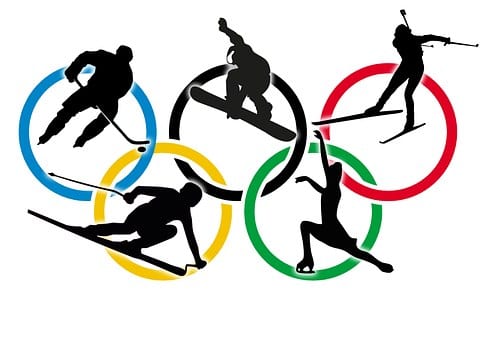The 2018 Winter Olympics are just around the corner. Starting with the opening ceremony on Feb. 9 to the closing ceremony on Feb. 25, the sporting world’s attention will turn to Pyeongchang, South Korea.
Pyeongchang is 80 miles outside of Seoul, the capital of South Korea. This city is best suited for Winter Olympics, not only because mountains cover more than 80 percent of the terrain, but also because it attracts winter enthusiasts with its pristine skiing conditions. The city’s largest resort, Alpensia Ski Resort is fully prepared to welcome the world.
Despite this, there seems to be a lack of interest in the Winter Olympics. This might be because the venues and countries participating are not as varied as the summer games. However, the Winter Olympics are awesome in their own right. Some of the countries involved are from tropical climates, which means that they had no access to the climate their sports are involved in — nations like these come from regions like Africa, Oceania, the Caribbean and Central and South America. Most of these countries don’t medal in their sports, but the fact that they reached the Olympic level and had the courage to participate against experienced opponents is commendable.
These sports are specific to the season, and so there are some popular sports that can only be done in the Winter Olympics, such as ski-jumping and snowboarding. Moreover, for the 2018 Pyeongchang Winter Olympics, the International Olympic Committee added some new events such as freestyle skiing, big air snowboarding, mass start speed skating and mixed double curling, making the games even more exciting.
Even if you are not a winter sports enthusiast, watching the skiers’ performances of aerial flipping and spinning or the figure skaters spinning three times in the air should make anyone feel joyful. Much of the Winter Olympics take place in the air: ski-jumping, slopestyle, aerials and figure skating jumps. The aerial acrobatics are some of the best parts of any Olympic Games because those are not scrupulous about detailed formality. Results are unpredictable, so every event is suspenseful until the end.
These sports are quite dangerous too, which adds some thrill to the whole event. According to the International Olympics Committee report, the athletes who competed in Winter Olympics have been injured more than any other athletes. If you have ever seen a photograph of an athlete who tumbled down the hill, you might have experienced pain just by watching. Nonetheless, people are still watch the games, whether it’s because of the thrill or because of the vicarious achievement.
Apart from danger, the Winter Olympics host artistic beauty and grace in events like figure skating. Danger and grace seem like oil and water, but it is an intriguing and entertaining mix. It’s interesting to see athletes defy the norm, like when ski-jumpers remain remarkably graceful as they land jumps on an ice chute at 80 miles per hour.
Besides the games themselves, the two-hour opening ceremony is sure to be enjoyable with a parade incorporating all 93 participating countries, an artistic program featuring an assortment of visual and musical performances unique to South Korea and, of course, the lighting of the Olympic torch. There will be virtual reality programming to enjoy; the NBC Sports VR app will feature over 50 hours of virtual reality. In short, the Winter Olympic Games are sure to offer excitement and joy in the next few weeks.


